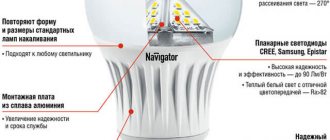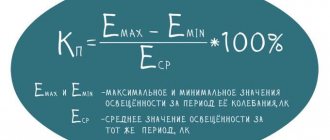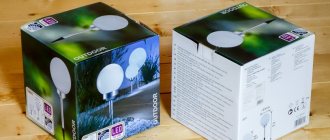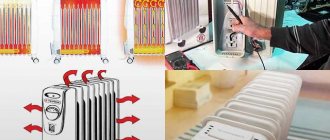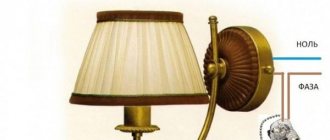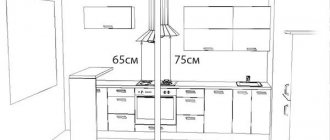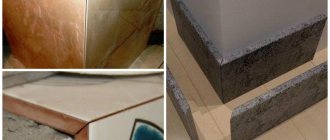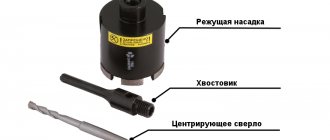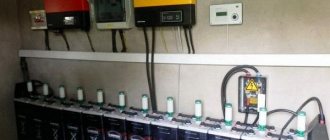Hello! While home lighting fixtures are familiar to almost everyone, few people are interested in street lighting fixtures. Most often, this is necessary only for those people who are directly related to street lighting (street lighting workers).
Meanwhile, there are situations when anyone may need information about such lamps, for example, when attaching a light source to a summer cottage, near a garage, etc. Anyone who needs to well illuminate certain open areas of street space is encouraged to consider utility lamps.
What is a housing and communal services lamp?
A housing and communal services lamp is a kind of structure that consists of a console, a housing - a reflector and a mechanism for securing the device itself to a support. Inside the console there is a ballast (ballast).
The case is protected by mesh or glass. The body itself is made of metal and coated with powder paint, which is resistant to corrosion. The glass of the lamp is made of durable polycarbonate, and at the same time, it has excellent light transmittance, which is not susceptible even to ultraviolet radiation (direct sunlight).
The lamp is mounted on a pipe bent at a certain angle to the main axis. Such a lighting device requires an AC electrical network with a rated voltage of 220V and a frequency of 50Hz.
Housing and utility lamp - description
The housing and communal services console lamp is a high-tech lighting device (a lamp for a Dnat lamp). Lamps for sodium lamps operate on the principle of generating an electric charge in a glass bulb, where mercury and sodium vapor are injected under pressure. This results in a constant luminous flux with a yellow tint, which is best suited for street lighting in cities. This lighting is equally effective in clear and cloudy weather; it does not dazzle. At the same time, the lower glow temperature gives a feeling of natural and comfortable warmth even in bad weather. Long service life (20-30 thousand hours) increases the cost-effectiveness of use in any street lighting systems. Enhanced light output - 80-100 Lm/W intensively saturates the luminous flux, which increases the safety of road lighting and creates good visibility.
Dnat lamps operate from a starting current in the range of 1-9 Amperes, which requires a starting mechanism. Therefore, luminaires with Dnat lamps are equipped with ballasts that generate the required current for starting and correct operation of the device. The choice of ballasts is carried out taking into account the power consumption of the lamps, methods of power restoration and the rated network voltage. In addition, the kit includes a pulse ignition device that performs functions similar to those of the ignition key in a car. It works on the principle of generating a high-frequency pulse.
Sodium street lamps are protected from external environmental influences, according to international standards, not lower than IP 55, which protects them from water, moisture, mechanical damage and dust.
Purpose of such devices
Housing and utility lighting devices are widely used to supply light to outdoor spaces, that is, to illuminate roads, streets, park areas, and squares. The light from these devices has a yellow tint, so it is most comfortable for the eye. Because of this, these kinds of lamps are installed on highways and to illuminate tunnels.
During suburban construction, such lighting devices have found application in private gardens, for illuminating plots and household areas.
Manufacturing options
Housing and utility lighting fixtures are now so diverse that they can serve not only as light sources, but also as a part of street decor. The housings of the lamps differ significantly from each other. They can be small, oval (ZHKU 06), can be spherical (ZHKU 24), can be almost square in shape, and even have the shape of a small spaceship (“Alpha”).
However, this is not the only difference between them. Due to the fact that different devices have different base diameters, different body shapes - reflectors, different types of ballasts, the power of the lamps is also different. Different power also implies different heights at which one or another lamp should be installed.
FAQ
Home / VERY USEFUL INFORMATION / FREQUENTLY ASKED QUESTIONS
Is it possible to install a metal halide lamp in a lamp made for a HPS lamp and vice versa?
1. In outdoor lighting fixtures (ZhKU and GKU, ZhSU and GSU, ZHTU and GTU), in luminaires for industrial lighting (ZhSP and GSP) and floodlights with a power of 250 W, 400 W and 1000 W, the same ballasts, IZU and electric ones are used cartridges. From the above it follows that lamps such as ZhKU, ZhSU, ZhTU, ZhSP and ZhO spotlights with an E40 cartridge with a power of 250 W, 400 W and 1000 W can be operated with DRI lamps of the corresponding power in a transparent bulb. In this case, the distribution of light intensity will change accordingly (see the product catalog of Svetotekhnika Trading House LLC, publishing house 2006-1). For types of DRI lamps, see ibid. Conversely, lamps such as GKU, GSU, GTU, GSP and GO spotlights with an E40 cartridge with a power of 250 W, 400 W and 1000 W can be operated with HPS lamps of the appropriate power. 2. In lamps and spotlights with a power of 70 W with HPS lamps, an E27 electric cartridge is used that can withstand a high-frequency pulse of 2.5 kV, and in these lamps an IZU type Z 70 K is used, which produces this pulse. At the same time, luminaires and spotlights with a power of 70 W with DRI lamps use an E27 electric socket that can withstand a high-frequency pulse of 5.0 kV, and these luminaires use IZU type Z 400 MK, which produces this pulse. Therefore, lamps and spotlights with a power of 70 W with HPS lamps cannot be operated with HPS lamps, but lamps and spotlights with a power of 70 W with HPS lamps can be operated with HPS lamps of the same power. 3. In lamps and spotlights with a power of 100 W and 150 W with HPS lamps, an electric socket E40 and IZU Z 400 MK are used. In lamps and spotlights of the same power (100 W and 150 W) with DRI lamps, an E27 electric socket is used, which can withstand a high-frequency pulse of 5.0 kV and also an IZU (Z 400 MK). Therefore, HPS and DRI lamps are not interchangeable due to the difference in lamp bases.
Please tell me, are the ZHO, RO, GO07 spotlights interchangeable with each other?
Based on the design features of spotlights and lamps, we inform you that the optical part of the spotlights allows you to change between each other without changing the design
Is it possible to use domestically produced ballasts with imported gas-discharge lamps?
Due to the fact that DRL and DNAT lamps from both domestic and imported manufacturers have approximately the same characteristics: overall dimensions, bases, operating and starting currents, control gear produced by KETZ can be used with imported lamps. With metal halide lamps it is somewhat more difficult, because... Since different manufacturers have lamps of the same power with different operating currents, when selecting a pair of lamps and ballasts, it is necessary to pay attention to the operating currents of the lamps and ballasts
What is the difference between housing and communal services lamps, RKU and GKU lamps? What is the difference between ZHO, RO and GO spotlights?
The difference is in the type of light source. The first letter in the name of the lamp/spotlight indicates the type of lamp used in it:
- “Zh” - high-pressure sodium lamp of any manufacturer: (Lisma DNAT, Osram NAV, Philips SON)
- “G” - metal halide lamp, it is necessary to select a lamp with the appropriate operating current: (Lisma DRI, Osram HQI, Philips HPI)
- “P” - mercury lamp of any manufacturer: (Lisma DRL, Osram HQL, Philips HPL)
- "D" - LEDs
- “I” - halogen incandescent lamp (Lisma KG, Osram Haloline, Philips Plusline)
- “L” - fluorescent or compact fluorescent lamp
Different types of lamps require different ballasts. In luminaires with different lamps of the same power (for example, ZHKU-150 and GKU-150), the sockets may differ.
A sodium lamp has the highest luminous efficiency (up to 150 lm/W), but the color of its light is yellow. Such lamps are used where the amount of light is primarily important - for street lighting, lighting of large open spaces, construction sites, parking lots, etc.
A metal halide lamp produces white light, but its luminous efficiency is less than that of a sodium lamp (up to 100 lm/W). Such lamps are used if it is important to create high illumination, but so that the light is white: in architectural lighting, lighting of facades, squares, as well as in interior lighting of sports stadiums, gyms, lighting of shops, shopping centers, etc.
The mercury lamp has the lowest luminous efficiency among discharge lamps - up to 60 lm/W. The color of its light is white with a pronounced blue-green tint. Such lamps are currently obsolete, and their use is ineffective
Is it possible to use a metal halide lamp in a utility lamp and vice versa? Are the lamps in ZhO/GO spotlights interchangeable?
Since December 2010, GALAD outdoor lighting fixtures ZhKU/GKU and floodlights with built-in ballasts ZhO/GO with a power of 250 and 400 W have been using universal ballasts (“KETZ”), the same IZU and electric cartridges, so ZhKU/GKU and ZhO/GO 250 and 400 W are interchangeable.
In lamps and spotlights with built-in ballasts with a power of 70, 100, 150 W, non-universal ballasts are installed, so the HPS and DRI lamps in them cannot be replaced with each other.
A floodlight with an independent ballast of any power can be either GO or ZO, depending on which ballast is connected to it
Luminaire lamps and their types
You should pay special attention to the lamp - it is the direct source of light. For housing and utility lighting fixtures, a sodium arc tube lamp (NAT) is used. These lamps are very economical and convenient because their service life is very long. One such lamp can operate for up to 10 years.
Depending on what type of lamp is selected, a lamp of a certain power is selected. So, for example, for the ZHKU 250 lamp, a lamp with a base of 40 mm in diameter and a power of 250 W is suitable.
Sodium gas-discharge lamps have a significant advantage over mercury lamps - with the same amount of power consumption, the degree of illumination from a sodium lamp is much higher. That is why such lamps are most popular in all municipal enterprises that are associated with street lighting.
It is also important that warm yellow light is most comfortable for the eyes, and motorists note that with such lighting, eye fatigue is much lower.
What is a utility lamp
A description of the technical characteristics of the lamp will be incomplete without deciphering its name. Let's start with the abbreviation ZhKU:
- Ж - indicates the type of lamp; The lamp uses a sodium arc tubular light bulb;
- K - speaks of the cantilever method of fastening;
- U - indicates the purpose of the lighting device, namely for use on the streets.
After the abbreviation there are numbers that at first glance let us understand the features of a particular model. Let’s take as an example a housing and communal services lamp marked 16-250-001 and analyze the meanings:
- 16—parameters of a sodium lamp;
- 250 - rated operating power;
- 001 - without protective glass and lampshade.
If the numbers “003” are indicated at the end, this indicates that a special anti-vandal glass is installed on the lampshade, which protects the flask from physical impact. The ZhKU 250 lamp means that the rated operating power is 250 W.
Such lamps are usually mounted using brackets on different supports. A pillar, wall, or console can serve as a support. The minimum height for installation is 6 meters.
Advantages of a housing and communal services lamp
Users have already managed to appreciate all the advantages of housing and communal services lighting devices:
• the housing and communal services lamp retains its technical characteristics throughout the entire period of use;
• parts of these lighting devices are made of materials that do not corrode and are resistant to adverse weather conditions;
• the protective coating on the lamp body is impact-resistant, it is not afraid of even impacts from stones;
• glass is not exposed to ultraviolet rays;
• convenient fastening of ballasts (no special tools required);
• the lighting device is easy to install and maintain;
• lamps have a variety of designs, developed by the best stylists;
• devices have a long service life;
• the cost of such a device is quite affordable and is easily accessible to buyers with different incomes.
Areas of application of RKU, ZhKU, GKU lamps
The main feature of these luminaires is the interchangeability of the lamps used in them (if they are the same in power and have the same type of base).
See also: Installation of SCS
These devices are most often used to illuminate city streets, squares, parks, playgrounds and sports grounds, all types of roads and highways. Widespread use is due to its low cost, attractive appearance and ease of operation.
All these lamps have an aluminum body. And it simultaneously performs two useful functions: it works as a reflector and a radiator.
Areas of application of DKU lamps
DKU lamps are the result of humanity's desire to save money. They operate on LEDs and are not inferior in brightness to their gas-discharge predecessors. But, if we compare electricity costs, the DKU consumes 2 times less. The main disadvantage of this type of lamps is the high cost. If we take into account that manufacturers guarantee a minimum of 50 thousand hours of continuous operation, then the DKU pays for itself very quickly.
DKU lamps are used in a variety of areas. They are gradually replacing RKU, HCS and GKU in the market. But due to their high cost, they do not do this very actively.
All of the above luminaires have a degree of protection IP65, which guarantees their full functionality in almost any weather conditions.
Installation of street lamps on lighting poles
The process of installing street lamps begins with project development and calculations. At the same time, a thorough analysis of underground communications is carried out for their presence at the installation site.
Initially, lighting supports are installed. As a rule, they are made in the form of metal hollow poles, inside of which wires are laid to power the lamps.
DKU, ZHKU, RKU and GKU luminaires are installed in cantilevers using special fasteners (brackets) at an angle from 5 to 20 degrees. Connecting the electrical part, as a rule, does not cause difficulties, since the manufacturer himself carries out the wiring and electrical installation; during installation, it is enough to connect the wires together and then insulate them.
See also: How to connect wires correctly
The optimal installation heights, lamp power values and connection diagrams for lamps are indicated by the manufacturer on the housing.
